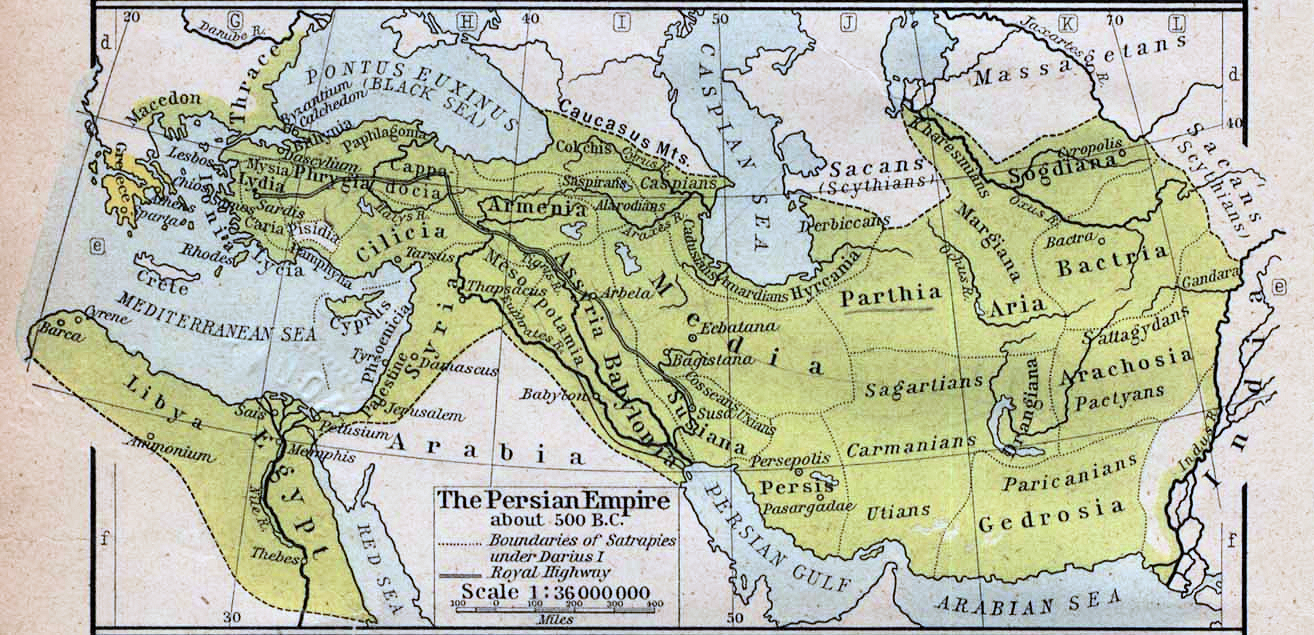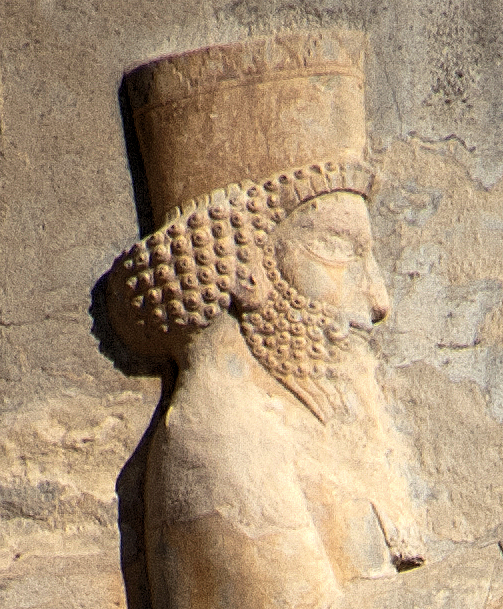|
Artagerses
Artagerses - the leader of the Cadusii, the military leader of the Persian king Artaxerxes II. History Artagerses according to Plutarch, was the leader of the Cadusii in the fight against the usurper Cyrus. Perhaps in writing "''Arta-garša''" his name means "''one who practices justice, order, truth''". According to the testimony of ancient authors, Artagerses was one of the commanders in the army of Artaxerxes II during the battle of Cunaxa, which took place in 401 BC, when the king's younger brother Cyrus the Younger claimed the Persian throne. The leader of the cadusii , Artagerses, brought with him a detachment of horsemen from Elam. According to Xenophon, Artagerses' horsemen lined up in front of Artaxerxes himself before the battle began. As Plutarch points out, Artagerses entered into an equestrian duel with Cyrus, during which he was killed. Before the start of the single combat, Artagerses accused the king of disgracing his name when he led the "villains of the Greeks" ... [...More Info...] [...Related Items...] OR: [Wikipedia] [Google] [Baidu] |
Cadusii
The Cadusii (also called Cadusians; grc, Καδούσιοι, ''Kadoúsioi''; Latin: ''Cadusii'') were an ancient Iranian tribe that lived in the mountains between Media and the shore of the Caspian Sea. The area that the Cadusii lived in bordered that of the Anariacae and Albani. The Dareitai and Pantimati people may have been part of the Cadusii. According to tradition, the legendary Assyrian king Ninus subdued the Cadusii. The Greek physician and historian Ctesias () was highly interested in the Cadusii, incorporating them in his invented history of an early Median dynasty. The Cadusii later voluntarily submitted to Cyrus the Great (), the first ruler of the Achaemenid Empire (550 BC–330 BC). According to Xenophon, as Cyrus was about to pass away, he appointed his younger son Tanaoxares ( Bardiya) as satrap over the Medes, Armenians, and Cadusii. The Cadusii were most likely part of the satrapy of Media, and perhaps occasionally that of Hyrcania. Although they fought on s ... [...More Info...] [...Related Items...] OR: [Wikipedia] [Google] [Baidu] |
Artaxerxes II
Arses ( grc-gre, Ἄρσης; 445 – 359/8 BC), known by his regnal name Artaxerxes II ( peo, 𐎠𐎼𐎫𐎧𐏁𐏂 ; grc-gre, Ἀρταξέρξης), was King of Kings of the Achaemenid Empire from 405/4 BC to 358 BC. He was the son and successor of Darius II () and his mother was Parysatis. Soon after his accession, Artaxerxes II faced opposition from his younger brother Cyrus the Younger, who assembled an army composing of troops from his Lydia, Lydian and Ionians, Ionian satrapies as well as Greek mercenaries in his bid for the throne. The forces of the brothers clashed at Battle of Cunaxa, Cunaxa in 401 BC, which resulted in the defeat and death of Cyrus. Following this, Artaxerxes II had to contend with several other revolts; a revolt by Evagoras I () in Cyprus between 391–380 BC, by the Phoenicians in , and most importantly, the revolts by the western satraps (known as the Great Satraps' Revolt) in the 360s and 350s BC, led by distinguished figures such as Datames, A ... [...More Info...] [...Related Items...] OR: [Wikipedia] [Google] [Baidu] |
Plutarch
Plutarch (; grc-gre, Πλούταρχος, ''Ploútarchos''; ; – after AD 119) was a Greek Middle Platonist philosopher, historian, biographer, essayist, and priest at the Temple of Apollo in Delphi. He is known primarily for his '' Parallel Lives'', a series of biographies of illustrious Greeks and Romans, and '' Moralia'', a collection of essays and speeches. Upon becoming a Roman citizen, he was possibly named Lucius Mestrius Plutarchus (). Life Early life Plutarch was born to a prominent family in the small town of Chaeronea, about east of Delphi, in the Greek region of Boeotia. His family was long established in the town; his father was named Autobulus and his grandfather was named Lamprias. His name is derived from Pluto (πλοῦτον), an epithet of Hades, and Archos (ἀρχός) meaning "Master", the whole name meaning something like "Whose master is Pluto". His brothers, Timon and Lamprias, are frequently mentioned in his essays and dialogue ... [...More Info...] [...Related Items...] OR: [Wikipedia] [Google] [Baidu] |
Cyrus The Younger
Cyrus the Younger ( peo, 𐎤𐎢𐎽𐎢𐏁 ''Kūruš''; grc-gre, Κῦρος ; died 401 BC) was an Achaemenid prince and general. He ruled as satrap of Lydia and Ionia from 408 to 401 BC. Son of Darius II and Parysatis, he died in 401 BC in battle during a failed attempt to oust his elder brother, Artaxerxes II, from the Persian throne. The history of Cyrus and of the retreat of his Greek mercenaries is told by Xenophon in his '' Anabasis''. Another account, probably from Sophaenetus of Stymphalus, was used by Ephorus. Further information is contained in the excerpts from Artaxerxes II's physician, Ctesias, by Photius; ''Plutarch’s Lives'' of Artaxerxes II and Lysander; and Thucydides' ''History of Peloponnesian War''. These are the only early sources of information on Cyrus the Younger. Biography According to Xenophon, Cyrus the Younger was born after the accession of his father in 424 BC. He had an elder brother, Arsicas (whose name changed to Artaxerxes II wh ... [...More Info...] [...Related Items...] OR: [Wikipedia] [Google] [Baidu] |
Battle Of Cunaxa
The Battle of Cunaxa was fought in the late summer of 401 BC between the Persian king Artaxerxes II and his brother Cyrus the Younger for control of the Achaemenid throne. The great battle of the revolt of Cyrus took place 70 km north of Babylon, at Cunaxa ( el, Κούναξα), on the left bank of the Euphrates. The main source is Xenophon, a Greek soldier who participated in the fighting. Preparations Cyrus gathered an army of Greek mercenaries, consisting of 10,400 hoplites and 2,500 light infantry and peltasts, under the Spartan general Clearchus, and met Artaxerxes at Cunaxa. He also had a large force of levied troops under his second-in-command Ariaeus. The strength of the Achaemenid army was 40,000 men. When Cyrus learned that his elder brother, the Great King, was approaching with his army, he drew up his army in battle array. He placed the Greek mercenaries on the right, near the river. In addition to this they were supported on their right by some cavalry, 1 ... [...More Info...] [...Related Items...] OR: [Wikipedia] [Google] [Baidu] |
Xenophon
Xenophon of Athens (; grc, Ξενοφῶν ; – probably 355 or 354 BC) was a Greek military leader, philosopher, and historian, born in Athens. At the age of 30, Xenophon was elected commander of one of the biggest Greek mercenary armies of the Achaemenid Empire, the Ten Thousand, that marched on and came close to capturing Babylon in 401 BC. As the military historian Theodore Ayrault Dodge wrote, "the centuries since have devised nothing to surpass the genius of this warrior". Xenophon established precedents for many logistical operations, and was among the first to describe strategic flanking maneuvers and feints in combat. Xenophon's ''Anabasis'' recounts his adventures with the Ten Thousand while in the service of Cyrus the Younger, Cyrus's failed campaign to claim the Persian throne from Artaxerxes II of Persia, and the return of Greek mercenaries after Cyrus's death in the Battle of Cunaxa. ''Anabasis'' is a unique first-hand, humble, and self-reflective account of a m ... [...More Info...] [...Related Items...] OR: [Wikipedia] [Google] [Baidu] |
History Of Talysh
Talysh is a historical and geographical region near the southwestern coast of the Caspian Sea, an area of compact residence of the Talysh. It got its name from the ethnonym of the Talysh people inhabiting it. Talish is divided between two states: Azerbaijan (Mugan) and Iran (Gilan and Ardabil). Ancient history In ancient times, Cadusii lived here (ancient Greek Καδούσιοι, Kadoúsioi, Lat. Cadusii) - a powerful Scythian tribethat was in constant enmity with its neighbors. The Cadussi lived on the western side of the Caspian Sea, south of the Aras, in the Median province of Atropatena (in the area of modern Iranian Azerbaijan and Gilan).Strabo them as a powerful mountain Scythian tribe of Gelae, fighting mainly on foot and well wielding a short sword or spear; they are excellent dart throwers; in mountainous places they fight instead of horsemen. Talysh are considered the descendants of the tribe Cadusii. Middle Ages and Modern Times In medieval Arab historio ... [...More Info...] [...Related Items...] OR: [Wikipedia] [Google] [Baidu] |






